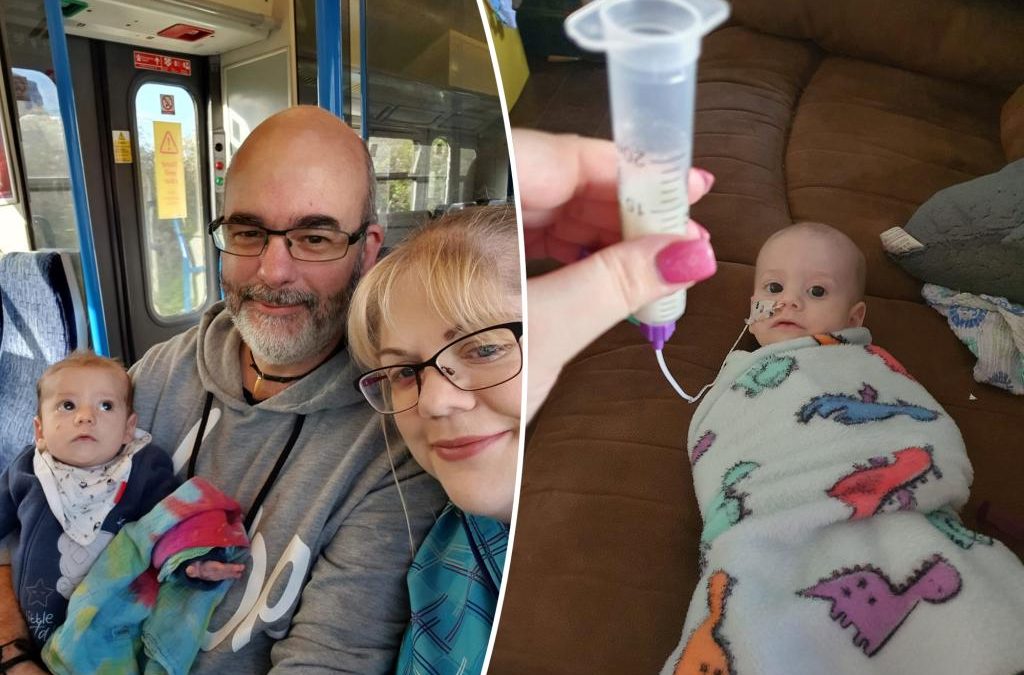Her life changed in a flash.
A UK mom of four says she was able to detect her infant son’s rare cancer using the flash on her phone’s camera.
Sarah Hedges, 40, was cooking a shepherd’s pie dinner in November 2022 when she looked across at her 3-month-old son, Thomas, and noticed a “white glow” in his eye.
Hedges said it was reflecting the light “like a cat’s eye” — so she used her phone to take photos with the flash on to see if she could spot it again.
“I couldn’t see it again, so then I wondered whether it was just the lighting,” Hedges, a support worker from Gillingham, Kent, told SWNS.
“It was playing on my mind, so the next day I moved Thomas around in different rooms near lighting and eventually, I saw it again,” she added.
Hedges turned to Google — her results suggested Thomas might have cancer, so she showed the photos to a doctor.
The doctor didn’t seem worried, Hedges said, but referred Thomas to Medway Hospital anyway.
Thomas was indeed diagnosed with retinoblastoma, a rare and aggressive form of eye cancer that affects babies and young children.
“The doctor called us back into his room to discuss the results. I was in the bathroom,” Hedges recounted. “When I came out, he was waiting for me. I knew then it wasn’t good news — no doctor waits for someone outside the toilet, do they?”
She continued: “Before he said anything I asked, ‘Is it cancer?’ and he said, ‘I’m sorry, it’s not good news.’”
Thomas was referred to the Royal London Hospital — he had six rounds of chemotherapy starting in November 2022.
After battling sepsis, he finished his final round of chemotherapy on April 6, 2023, and rang the bell on May 10, 2023.
Hedges said Thomas is recovering well. She describes him as a “cheeky little boy” who loves to “rough and tumble” with his older brother. Hedges has three other children: Beth, 21, Dillan, 16, and Lucas, 8.
The Childhood Eye Cancer Trust (CHECT) says that signs of retinoblastoma include a white glow — which may only appear in certain lights or a squint — as well as a change in the appearance of the eye, or a swollen eye.
Often, only one sign or symptom is present.
“Symptoms can be quite subtle, and children often seem well in themselves, which can make it hard to diagnose. In just under half of all cases, a child must have an eye removed as part of their treatment,” CHECT chief executive Richard Ashton explained.
He added: “We are grateful that in Thomas’ case, his symptoms were recognized so that he could receive treatment.”
Hedges recalled thinking Thomas was going to die.
“When you hear the word ‘cancer,’ you automatically think of the worst — this can be life-threatening,” she sighed. “I just wanted to be swallowed up and someone to tell me that it was a bad dream and that I would wake up in a minute.”
Source




